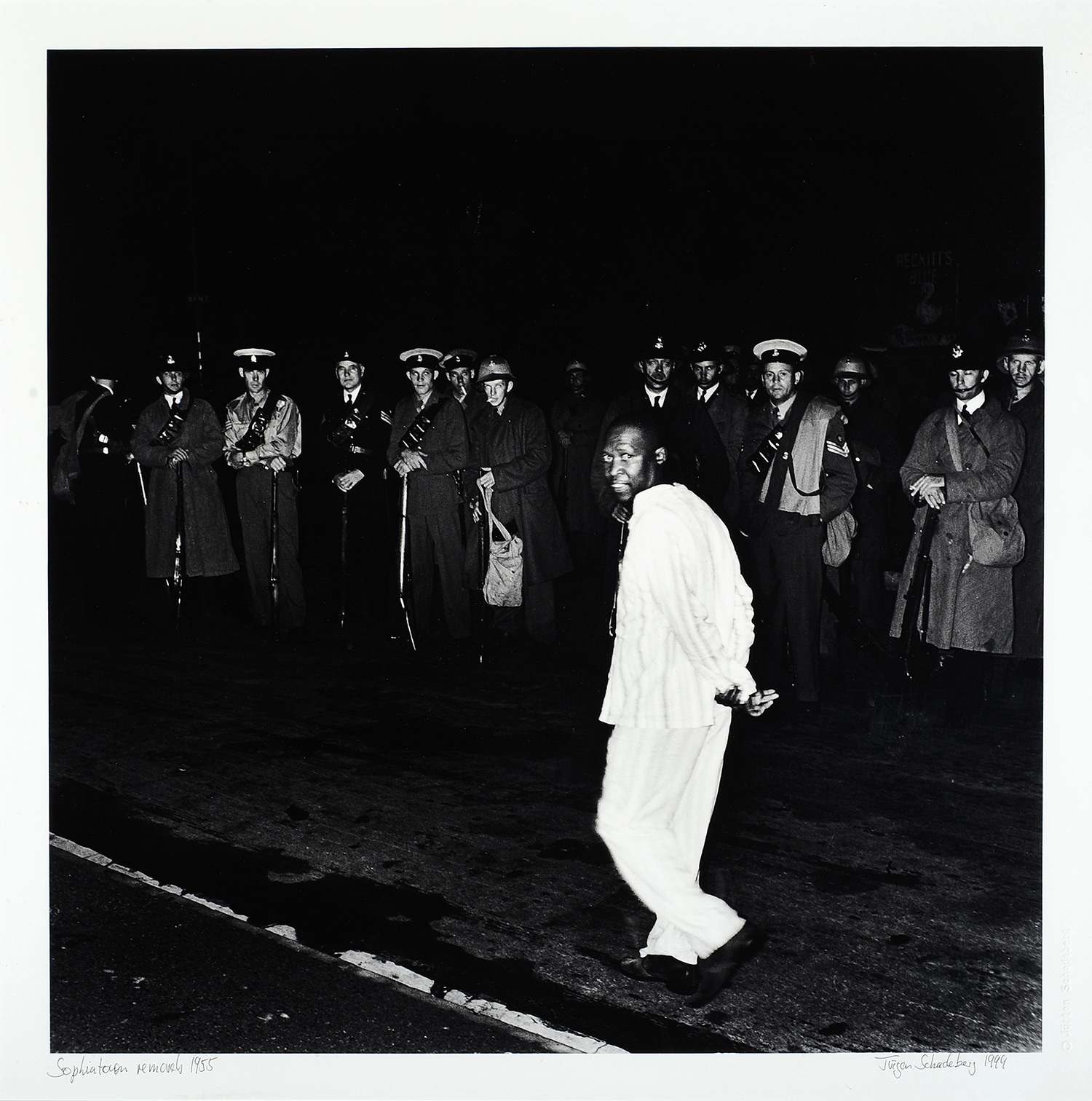Jurgen SCHADEBERG (1931 – 2020)
BIOGRAPHY
Jürgen Schadeberg, referred to by some as ‘the Father of South African Photography’, was a principle figure in South African and world photography.
He was born in Berlin in 1931 and took a photograph for the first time when he was 10 years old. It was of people in a Berlin air raid shelter. While still in his teens, he worked as an apprentice photographer for the German Press Agency in Hamburg.
In 1950, he emigrated to South Africa and became Chief Photographer, Picture Editor and Art Director on Drum Magazine. Part of a group of photographers that included Bob Gosani, Ernest Cole and, later, Peter Magubane, he photographed many historic and pivotal events in South African history, among them the Defiance Campaign of 1952, the 1956 Treason Trial, the Sophiatown forced removals of 1955, the Sophiatown jazz and social scene, the Sharpeville funeral of 1960, and pictures of Robben Island political prisoners.
Some of the people he photographed include Nelson Mandela, Walter Sisulu, Oliver Tambo, Trevor Huddleston, and Govan Mbeki. He also documented jazz legends, such as Thandi Klaasen, Hugh Masekela, Kippie Moeketsi, and Miriam Makeba. When Drum wanted the singer Dolly Rathebe to be the cover girl for one of their issues, Schadeberg took her to a Johannesburg mine dump and photographed her in a bikini. The two were arrested for contravening the Immorality Act, which forbade interracial relationships.
Looking back on the period he spent documenting the struggle of South Africans during apartheid, he remembered most ‘the events of 6th April 1952 when the anti-apartheid movement leaders met and announced the formation of the Defiance Campaign against the apartheid laws and the crowds were singing Nkosi Sikelel’ iAfrica. This was a very emotional moment for me.’
He met his future partner and wife, Claudia, in London in the 1970s and they teamed up on a collaboration which lasted over 30 years. With her help, he continued to work on major photographic projects, books and exhibitions, to tour international shows and make his own archival hand prints. He worked in London, Berlin, Paris, South Africa, and Spain, and photographed in many African countries.
In 2007, he was awarded the Officer’s Verdienst Kreuz First Class by the German President.
In 2014, he received the Lifetime Achievement Award from the ICP in New York and was awarded a Doctorate, Doctor Honoris Causa, for his life work by Valencia Universitat Politecnica.
Schadeberg’s body of work spans more than 70 years and incorporates a collection of some 200 000 negatives.
‘For me, photography is the most important medium for retaining history, knowledge and an understanding of the past,’ he said. ‘I am looking for images which have a certain magic and are timeless, also images that don’t need an accompanying text to explain them.’
His memoir, The Way I See It, was published Pan Macmillan South Africa in 2017.
In addition to his work in the SABC Art Collection, photographs by him are held in the collections of the UK Arts Council, National Portrait Gallery, Tate and the Victoria and Albert Museum in London.


